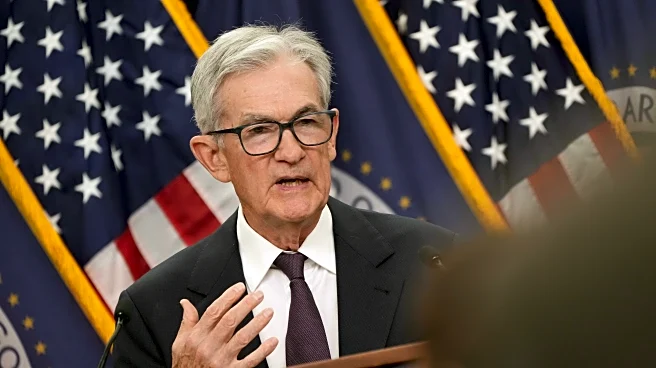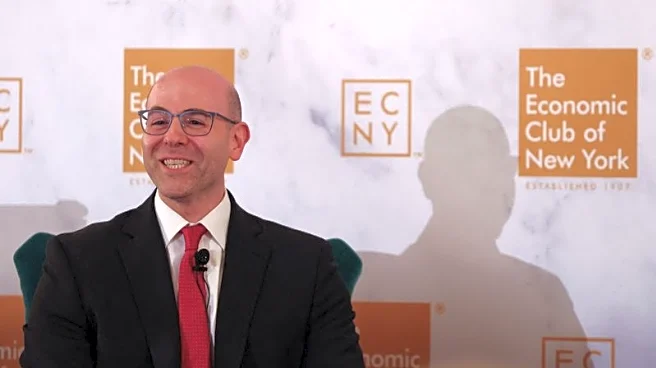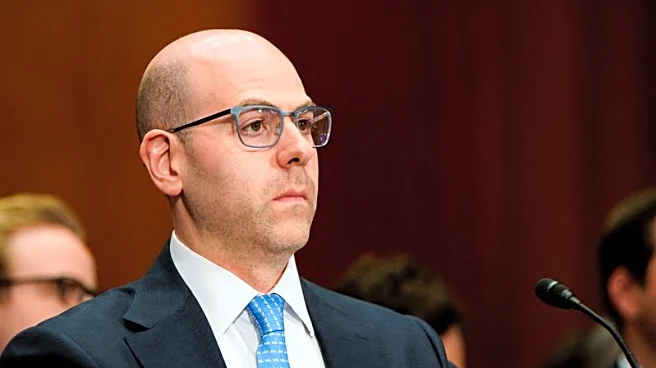What's Happening?
The Federal Reserve's minutes from the September 16-17 meeting reveal that most officials supported further reductions in the key interest rate due to rising concerns about unemployment. The central bank decided to cut the rate by a quarter-point to approximately 4.1%, marking the first reduction this year. The decision reflects a majority view that the risk of unemployment had increased, while inflation risks had either diminished or remained stable. However, the minutes also highlight a division among the 19-member committee, with some officials advocating for maintaining higher rates to combat persistent inflation. Chair Jerome Powell acknowledged the uncertainty in policymaking, stating that there are no risk-free paths.
Why It's Important?
The Federal Reserve's decision to cut interest rates is significant as it aims to stimulate economic activity by lowering borrowing costs for consumers and businesses. This move could potentially boost spending and hiring, providing relief to sectors affected by economic slowdowns. However, the internal division within the Fed underscores the complexity of balancing economic growth with inflation control. Lower rates could lead to increased spending, but if inflation remains unchecked, it could erode purchasing power. The decision impacts various stakeholders, including homeowners, businesses, and investors, who may experience changes in loan rates and investment returns.
What's Next?
The Federal Reserve will continue to monitor economic indicators, including inflation and employment data, to guide future rate decisions. The ongoing government shutdown has disrupted the flow of economic data, complicating the Fed's ability to make informed decisions. If the shutdown persists, it could delay critical reports, such as the inflation report, affecting the Fed's policy direction. Stakeholders, including businesses and policymakers, will be closely watching for any signs of economic recovery or further inflationary pressures.












